No matter how complicated growing wheatgrass (common wheat) looks to you at first glance, the whole procedure is quite simple. In general, anyone can grow it in their own home. Although some gardeners believe that wheatgrass is a type of wheat-berries, it is actually wintering wheat which you should start growing from the high-quality, preferably organic, seeds.
Grow it in water, a container filled with potting soil, or directly on the ground. Let it grows without limitation, or trim it from time to time to keep your grass to the desired height. Let’s see how to provide an excellent pet treat, delicious clipping for a juice, or cute decoration for your garden.
Table of Contents
Tips How to Grow Your Wheatgrass
By following these seven steps, you will get excellent wheatgrass at any time you need it. Since it is healthy and refreshing, you and your family will drink delicious juice made of this grass and get a bunch of valuable nutrients at the same time in only one glass. Let’s see how to do that.
You will need:
- Organic wheatgrass seeds
- Organic potting mix
- Planting container
- Glass jar
- Spray bottle
- Scissors
Prepare a jar – Take a glass jar half full of water and put your wheatgrass seeds into it. Take care that water covers all used seeds by at least 1 inch (2.5 cm). Let it soaks overnight at average room temperature. During the night, the seed will take on water and start sprouting.
Prepare a container – The procedure of preparing the container for growing your grass is quite simple. Just add a layer of 0.5 to 1 inch of an organic potting mix.
Sprinkle the seeds – Strain off the water in the morning, sprinkle the seeds over the surface of the potting mix, and press them very lightly.
Regular watering – Water the seeds the way the potting mix is always moist, but not entirely wet. A spray bottle is an excellent choice for this job. You can also pick out a container with drainage holes to avoid saturation of your plants.
Covering the seeds – Cover the seeds with some newspaper, and water it until soaking through. It is essential since seed sprouting requires a dark and moist environment. Wet the paper at least two times a day.
Remove the cover – You can remove the newspaper after four days when you can notice wheatgrass sprouts tall about 1 inch (2.5 cm) all over a container. Keep it in a sunny area and keep watering twice a day. That way, you will prevent drying out your new plants.
Prepare for harvesting – After a week, you will get lush, beautiful wheatgrass, you can cut with scissors and use for juicing.
Basic Care Tips for Growing Wheatgrass
After you have planted your wheatgrass successfully, you need to provide its quality growth. Follow these simple tips and enjoy your healthy and beautiful decoration and/or meal.
Adequate light
Initially, before sprouting, you should keep planting wheatgrass in the dark. That way, you will simulate the natural darkness below the surface of the ground.
After your grass becomes about 1 inch (2.5 cm) high, after approximately three to five days, you can remove the cover. Don’t worry if noticing that your grass is a bit pale. The reason is the lack of regular access to light.
It will be enough to place the uncovered tray next to a window and to expose it to bright, but indirect light. You will be surprised how fast your wheatgrass will green up.
In general, this grass will grow lush even though it gets direct sun for a very short time during a day. You can take advantage of an indirect natural bright light or use led grow lights as well, and expect your grass does well in both cases.
After a few more days, you should move the tray with your grass to a place with direct sun for most period of the day. Just don’t forget to check your growing medium and water your grass regularly to ensure the best conditions for healthy growth.
Optimal temperature
When starting growing wheatgrass, you should provide a perfect temperature for its healthy and lush growth. If you grow this crop indoors, the best temperature optimal range is from 60 to 75 F (15.5 – 24 C) in the very beginning.
Once your wheatgrass has reached 0.25 to 0.5 inches (0.6 – 1.3 cm) in height, it will tolerate lower or higher temperatures without any problems. The only requirement is that their roots stay comfortable.
However, if you want to get the best crop, you need to provide a constant temperature in the mentioned range during the whole process.
If you grow wheatgrass outdoors, look after your plants carefully once the temperature is over 80 F (27 C). It would be nice to secure some shade for them during the hottest part of the day.
If you grow it inside, be sure that your wheatgrass in covered trays has adequate ventilation. Otherwise, you will probably face a problem with mold or fungal growth.
Proper watering
In general, you should use a misting bottle and water your wheatgrass twice a day. In the very beginning, you just need to try to keep your sprouts moist. That light level of humidity is enough for plants to get the roots into the ground or medium.
Once plants have set strong roots down, you should keep the growing medium moist, but avoid too hard watering. You don’t want too wet soil which can cause the roots to rot. In the ideal conditions, your sprouts will get enough water to create vibrantly-green growth.
If you decide to place a tray with your wheatgrass in full sun, you need to check the growing medium regularly. In such conditions, it may need more frequent watering. The best way is to keep an eye on it and spritz it when spotting that the soil is not moist as it needs to be.
Necessary fertilizing
Actually, you don’t need to boost the growth of your wheatgrass every time you water. However, if you decide to push up its growth, it is enough to dilute some liquid kelp fertilizer and water your plants by using a spray bottle.
Wheatgrass Harvesting
You will know that harvesting time is close once your wheatgrass reaches about 6 inches (15 cm) in height, and you notice the so-called splitting stage. This phase begins when leaves are 7 to 8 inches (18 – 20 cm) high and start forming secondary ones. In average, you can start harvesting after approximately ten days of growth.
The best way is to cut off your grass above the roots. For that purpose, use sharp scissors or a super-sharp knife to avoid tearing young plants. Usually, you can pick the same wheatgrass at least two to three times, but don’t forget to add liquid kelp fertilizer after first harvesting.
It will encourage healthy fresh growth of the same plants and ensure you the second and third harvesting as well. Just keep in mind that the third crop probably won’t be as sweet and tender as the first one. Once cut, your grass is ready for making juice, or you can store it in the fridge about a week.
If you plan to make juice, you should know that you need a lot of plants for just a few glasses. For daily diet, you need to sow a few trays of wheatgrass seedlings and grow them at a time. The best way is to make a rotation. In other words, you need to establish a harvesting cycle of two or three seeds at different stages.
How to Store Wheatgrass
- Fresh – Make sure that your wheatgrass is as dry as possible before storing. Wrap it with a dry paper towel and put it into a bag. That will ensure the absorption of excess humidity. As I have already mentioned, this grass can stay in the fridge for about seven days, but you can expect its full freshness during the first three or four days.
- Frozen – There is also a possibility to make juice and freeze it in an ice cube tray. Adding these green cubes into the glass will give the whole different taste to your fruit juice or smoothie.
- Powder – There is one more option. By using a home dehydrator, you can get wheatgrass powder. Store it in an airtight container and use it as any other powder.
Nutritional value of 1 ounce (28.35 g) of wheatgrass juice
| Nutrient | Wheatgrass |
| Protein | 860 mg |
| Vitamin C | 1 mg |
| Vitamin E | 880 mcg |
| Vitamin B12 | 0.30 mcg |
| β-carotene | 120 IU |
| Phosphorus | 21 mg |
| Calcium | 7.3 mg |
| Magnesium | 8 mg |
| Potassium | 42 mg |
| Iron | 0.65 mg |
Juicing Wheatgrass
These days, juicing wheatgrass has become a trend, but it is actually a good thing for you. The fact is that you need just a couple of weeks and a minimal effort to get juice from seeds.
The procedure:
- Rinse the wheatgrass – The first thing you should do is to rinse the wheatgrass a little bit. Since it was grown from organic seeds, and you used organic soil or organic potting mix, you don’t need to wash it too heavy. It is enough to rinse the dust collected from the air.
- Using masticating juicer – Since wheatgrass is not fruit, it is usually tricky to extract the juice. From my experience, the best option is using one of the excellent masticating juicers you can find on the market these days.
- Avoid centrifugal juicers – Even though centrifugal juicers are a fantastic choice for fruit, they can’t grind up the wheatgrass, and you won’t get a decent amount of juice by using those units.
- Using a mortar – On the other hand, you can grind your grass in a mortar. After making a thick paste, just add a little water in it. Keep grinding for a little longer and transfer it to a strainer covered by the cheesecloth. Let the juice filter through it while preparing the rest of the paste. In the end, pick up the cheesecloth carefully and squeeze out all the juice left over.
- Using a food processor – It is the third method, but I can’t recommend it to you since a food processor will probably oxidize the juice too much. Anyway, it is a process of mixing wheatgrass with water in this machine and shaking the content until getting pulverized grass and green liquid. You just need to extract juice through the strainer covered with cheesecloth.
Additional Tips
1. What to do with the pulp
You can do a few things with the pulp you get after juicing your wheatgrass. Add it to the slice of bread and eat it if you like. As for me, I usually add it to my worm composter.
If you don’t have any, you can mix that pulp with mulch and shredded newspaper, and put it in your compost tumbler or into the compost pile. Since it decomposes quickly, your garden will get a lot of benefits from this excellent nutrient.
2. Wheatgrass for Your Pets
Have you ever heard that you can grow wheatgrass as a healthy additive for your beloved cat? It is actually a part of so-called cat grass along with barley grass and oat grass. Dog grass is less common, but it is the same thing.
Both animal species chew grass to make throwing up much more comfortable. This process helps them to get rid of the indigestible material they have eaten. Plus, it will prevent constipation and settle the appearance of an upset stomach.
Try to grow some grass for your pets, and let them chew on it. That way, your pets will get what needed without eating grass on the lawn full of pesticides or pests.
Don’t forget to pin it!

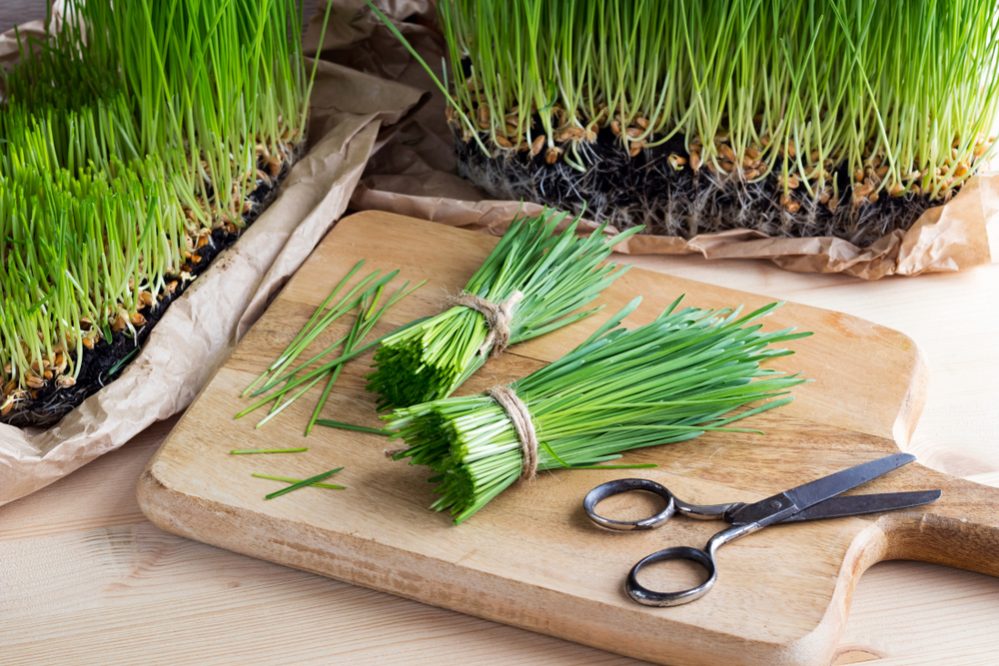
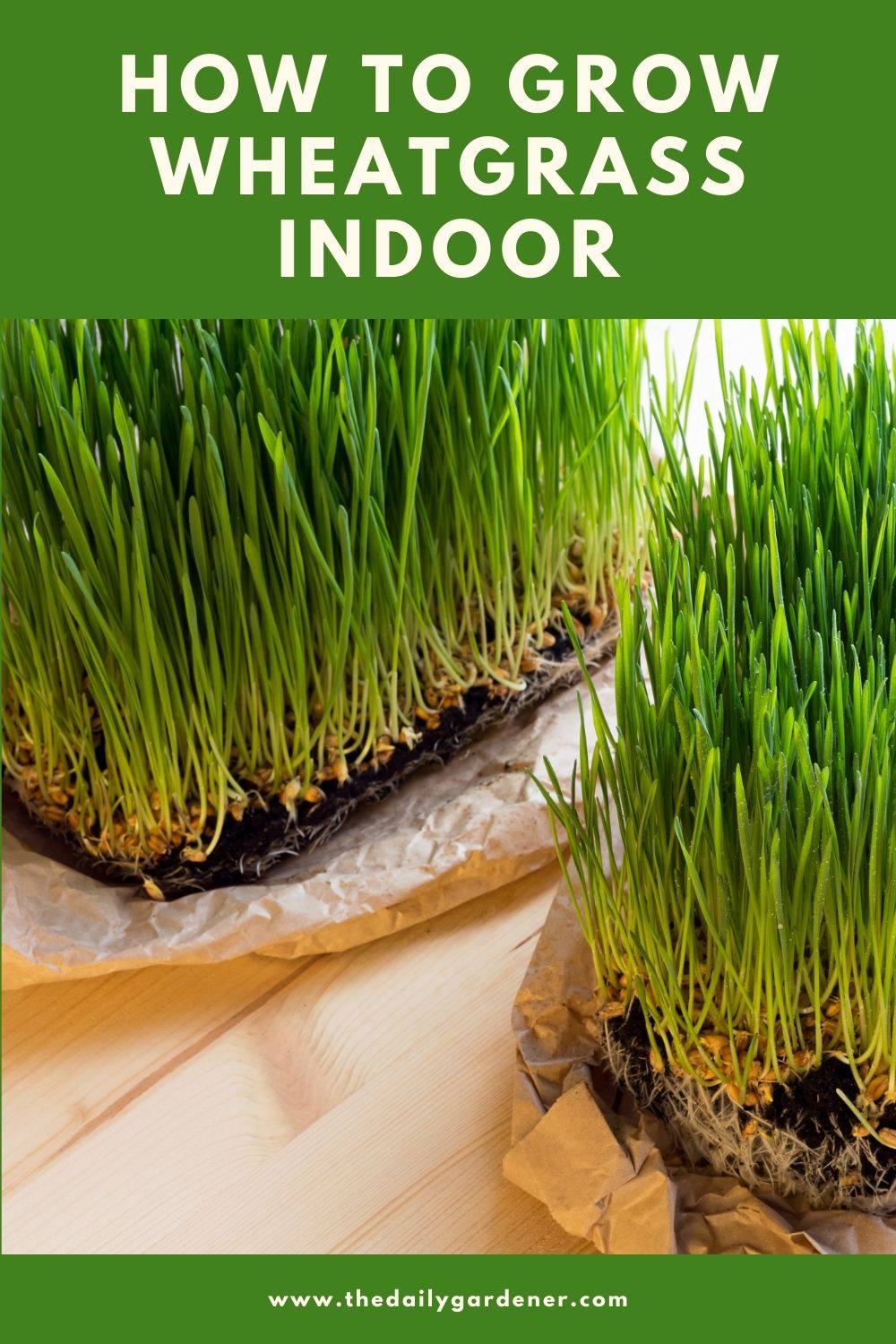
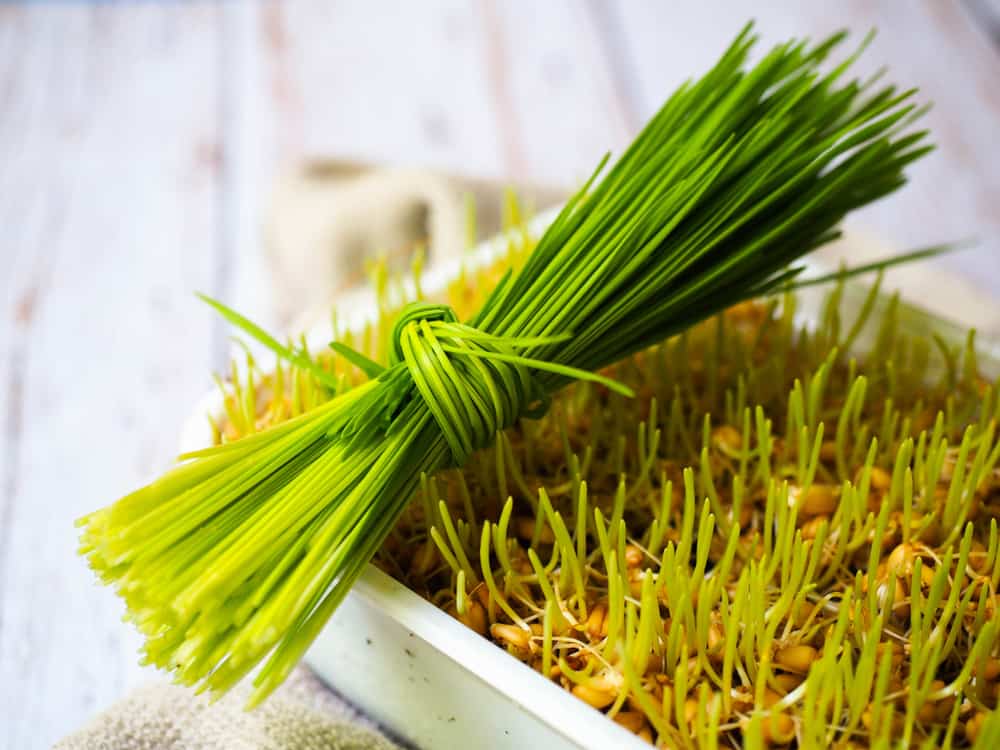
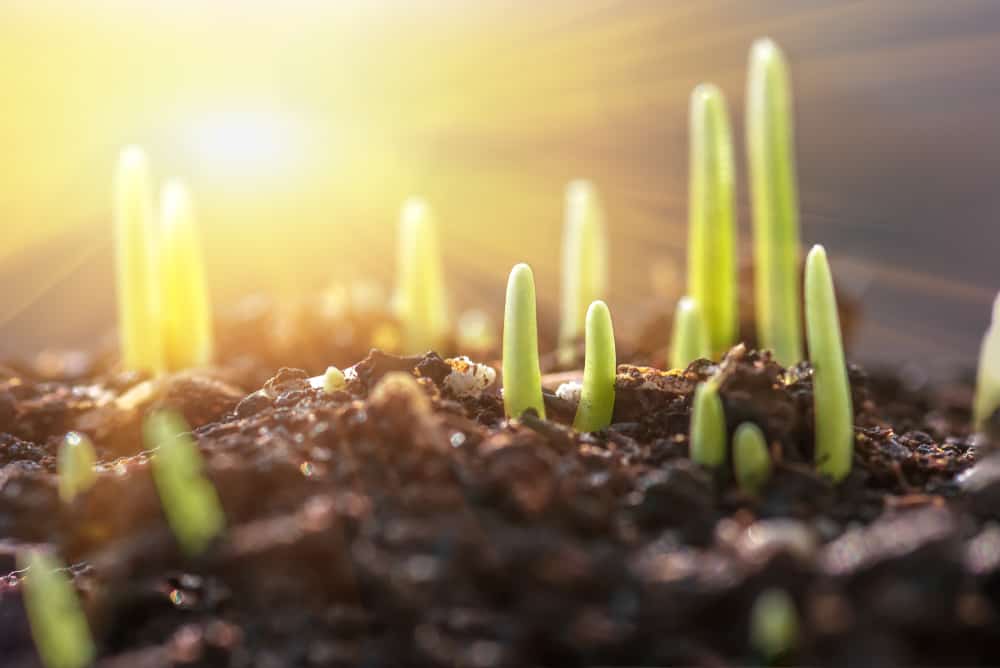
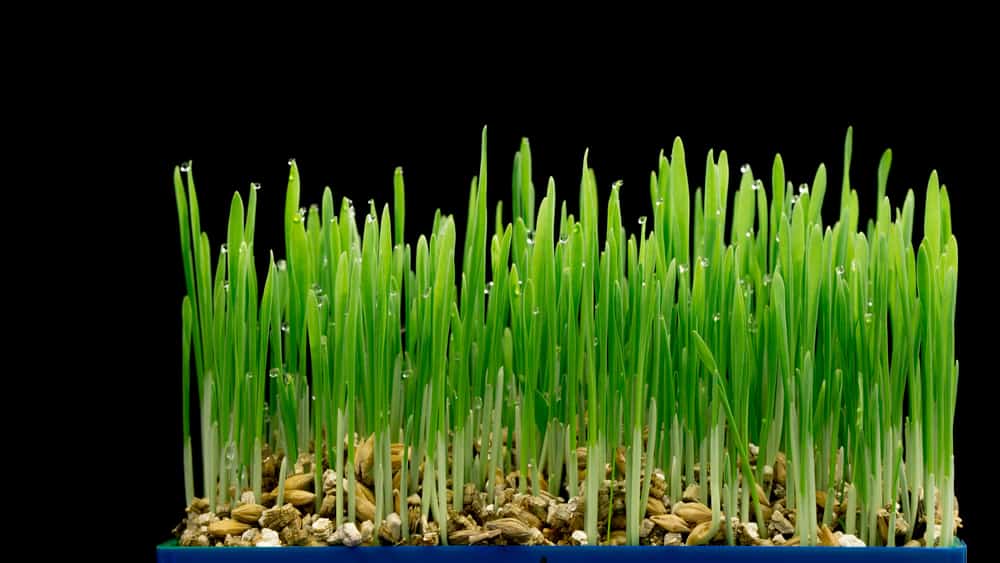
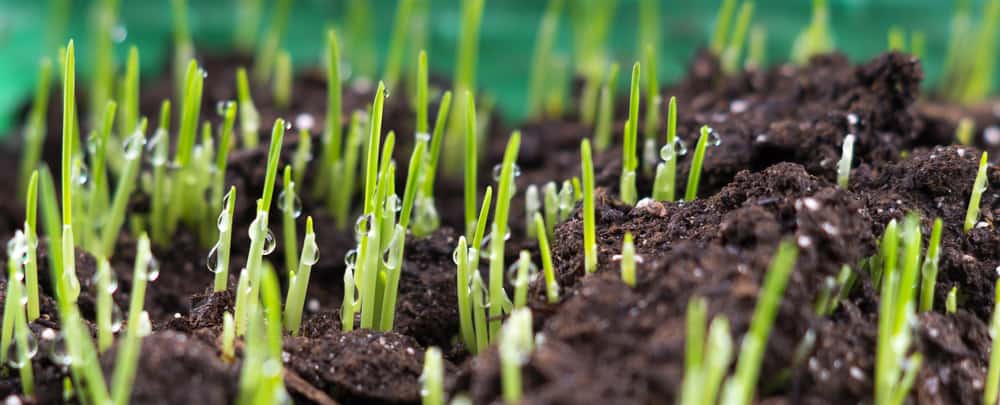
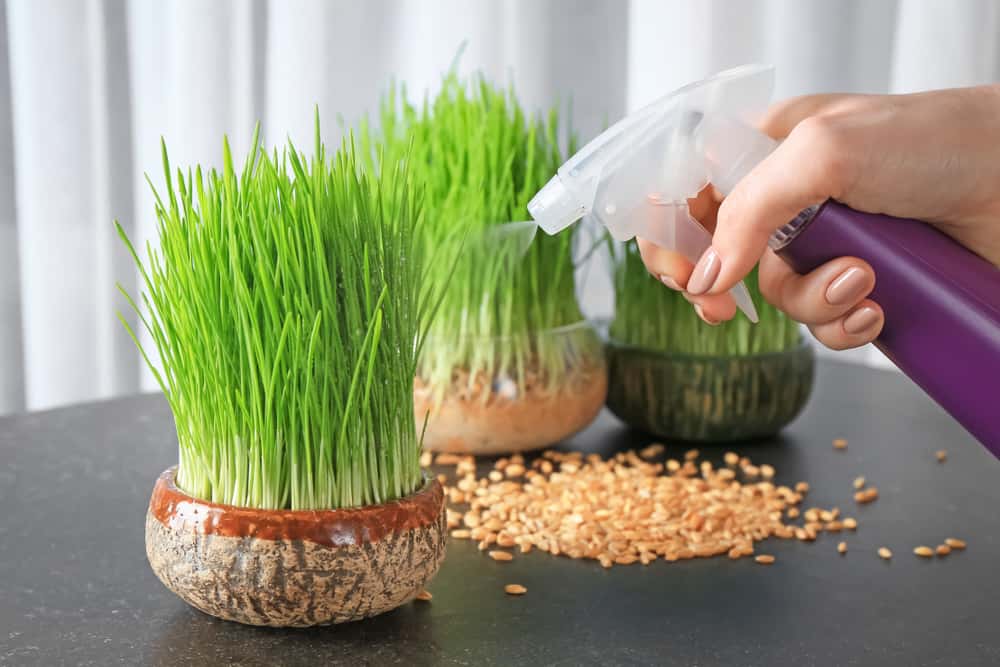

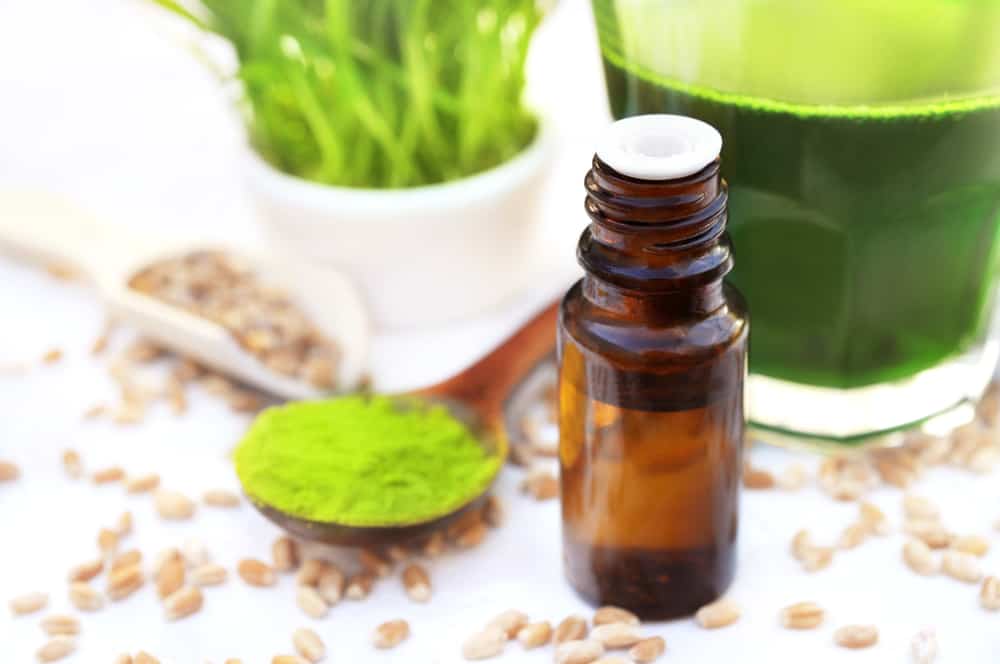
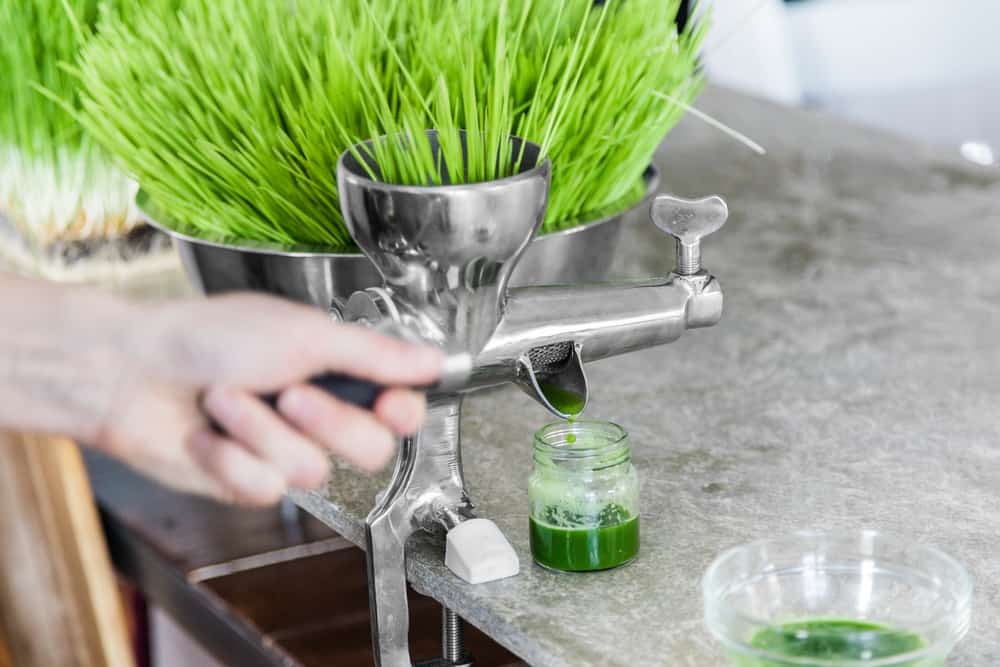
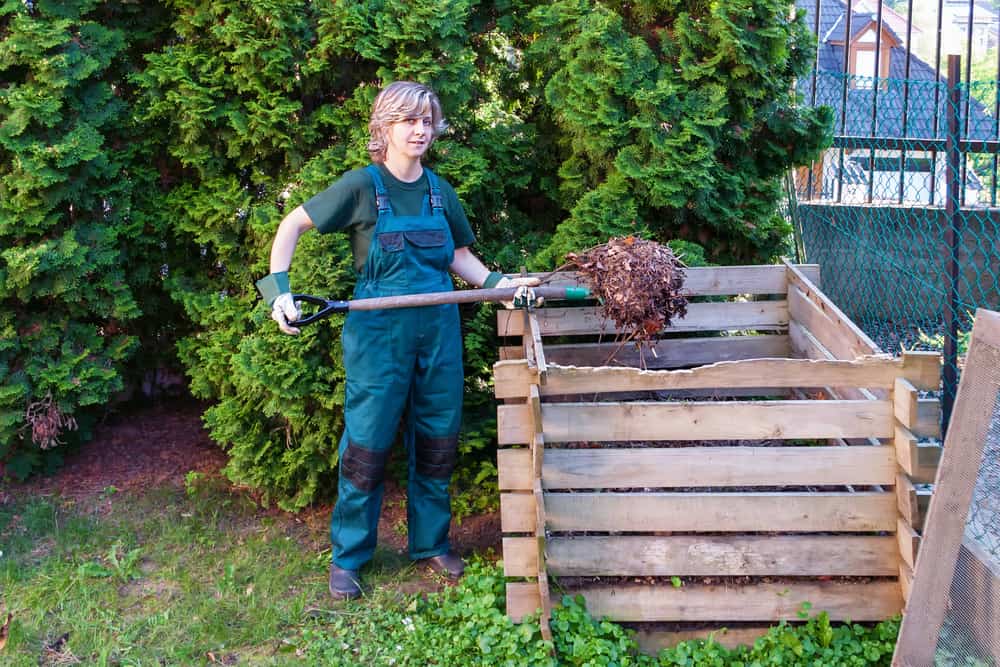
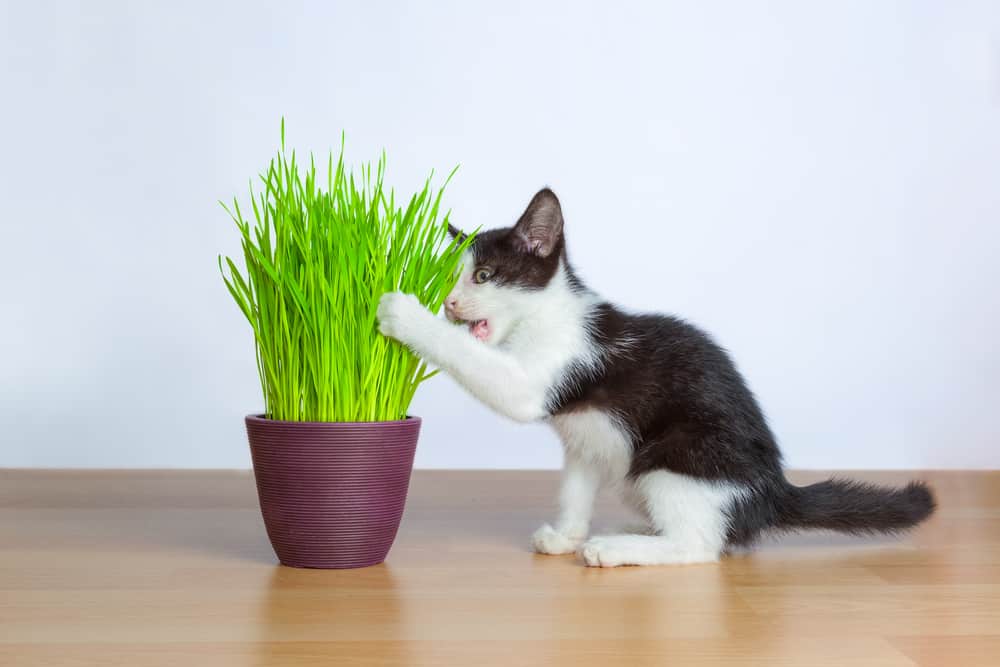
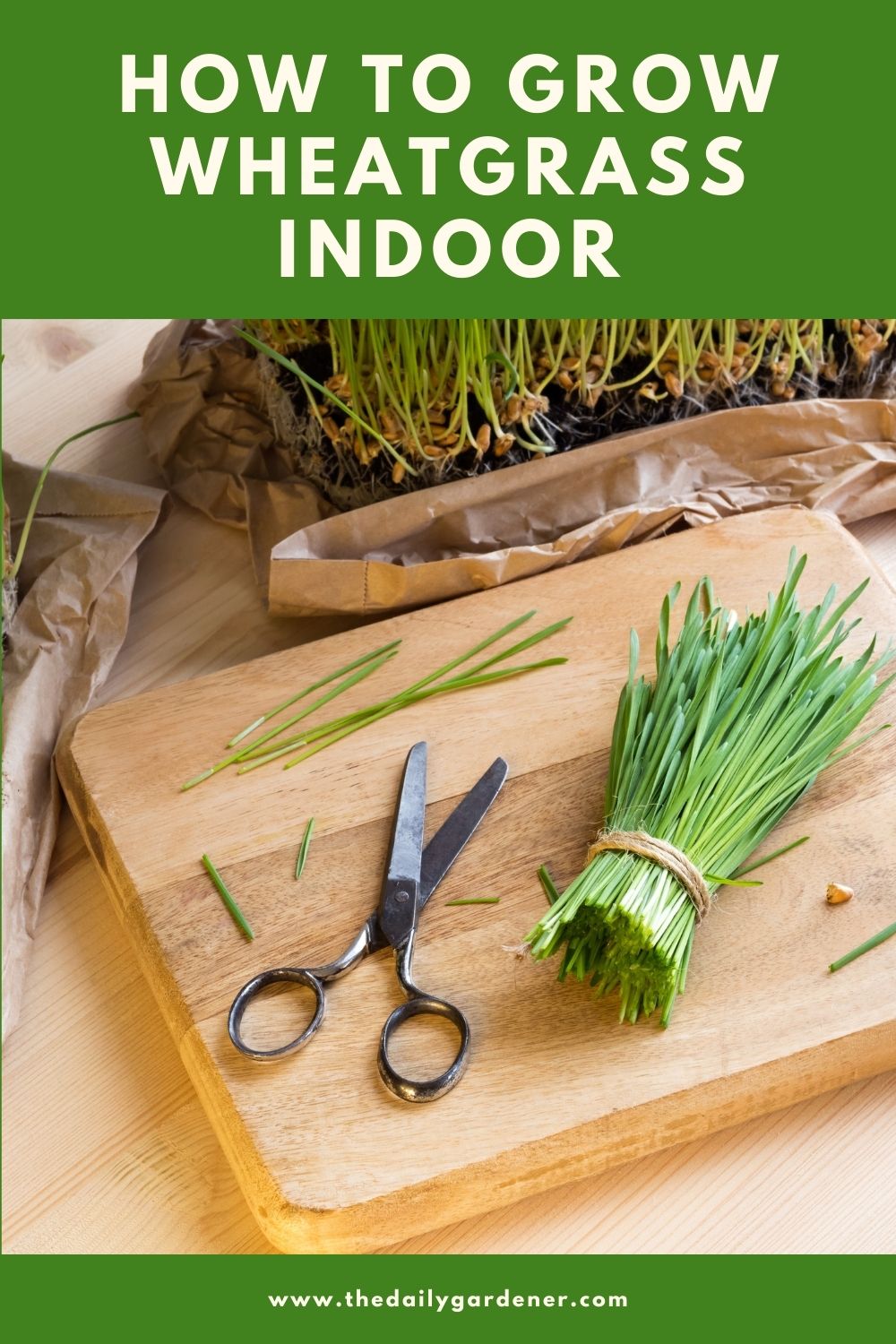
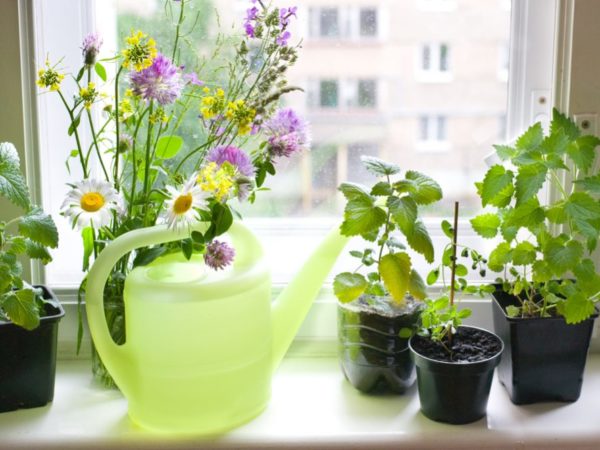
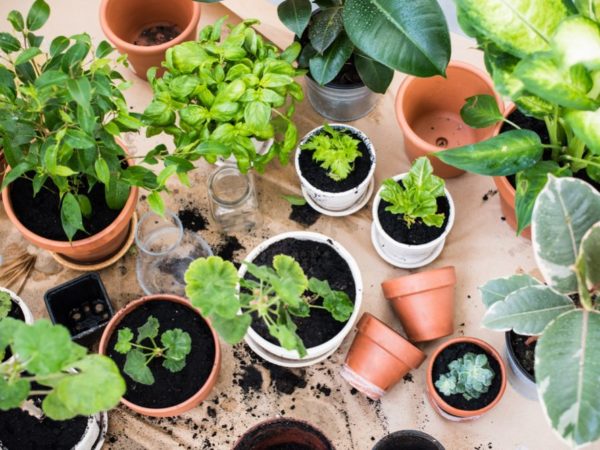
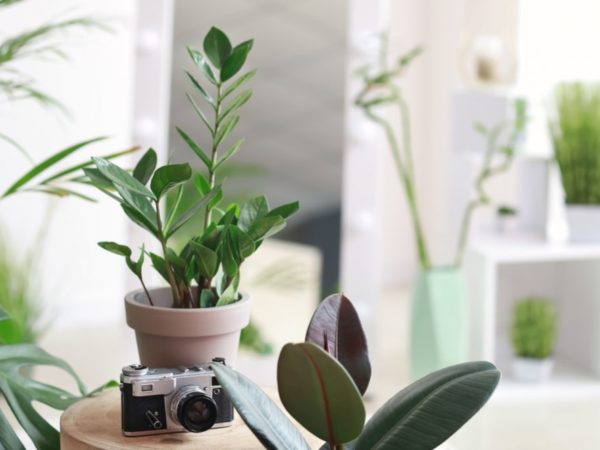
So helpful! Thank you!
Good Information Peter. Thanks for Sharing !!!
“If you plan to make juice, you should know that you need a lot of plants for just a few glasses. For daily diet, you need to sow a few trays of wheatgrass seedlings and grow them at a time. The best way is to make a rotation. In other words, you need to establish a harvesting cycle of two or three seeds at different stages.”
Thank you for your informative article: question how many square inches of standard growth wheat grass does it take to fill one 8 ounce glass of wheat grass juice?
I’d like to know, so as the plan the rotation, size of the wheat grass I’m growing.